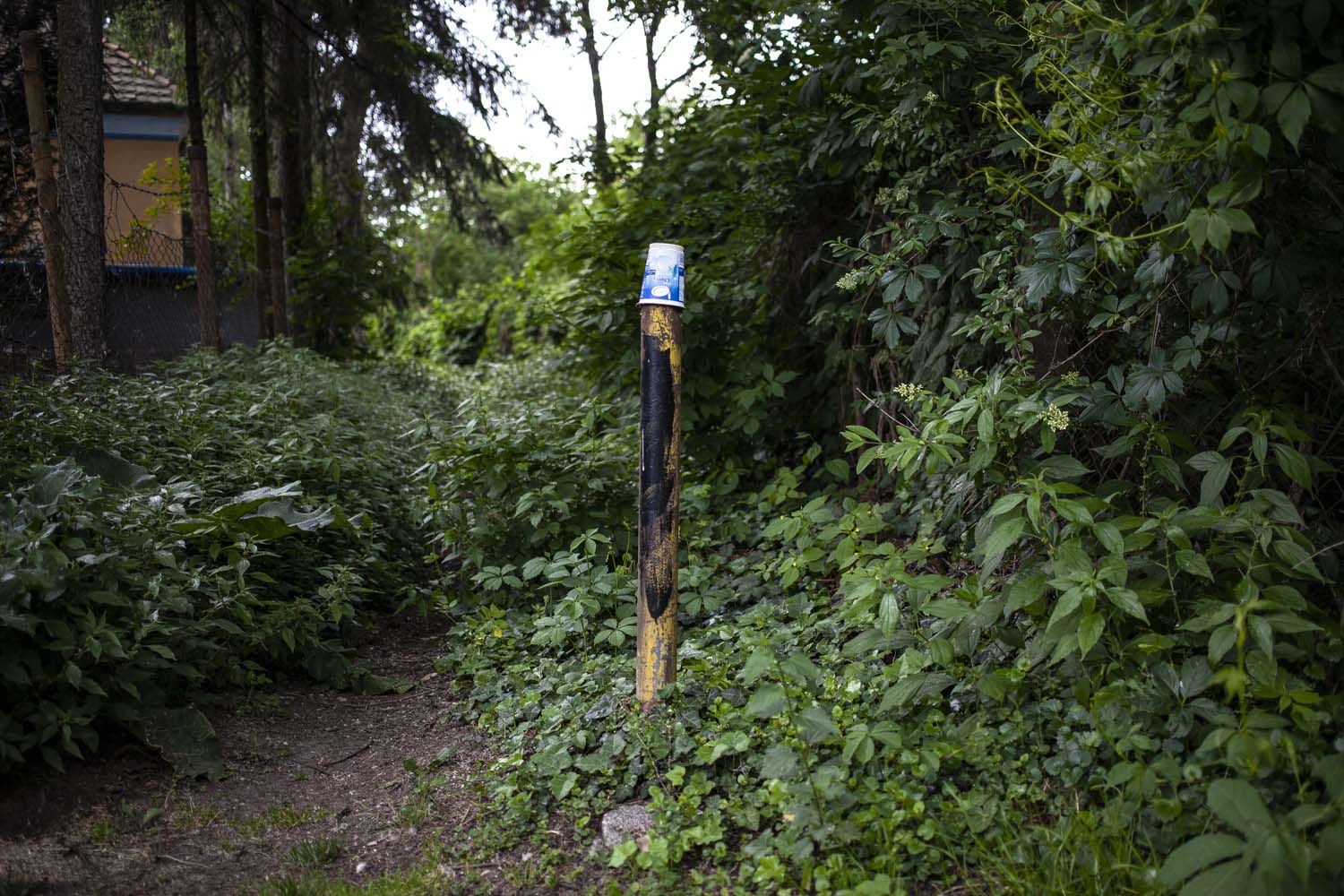GRANTING OF RIGHTS TO VARIOUS ENTITIES COULD RELATIVIZE THEIR EXISTING
PROTECTION AND WEAKEN THE TRADITIONAL HIGHER AUTHORITY SYSTEM OF REGULATION
Eliška Mazalanová & Peter Szalay in online conversation with Vojtěch Vomáčka
In our project we work with issues related to the Right to the City in the era of climate change. This also refers to the issue of whether we should broaden the concept of the Right to the City to entities other than human entities. Recently, attempts have been made to legislatively anchor rights to inhuman entities, such as rivers and hills. Do you think that similar legislation is a meaningful approach to environmental protection? Who should legally represent rivers and hills and how should they do it? And is such legislation transferable to our geographical and cultural region? (the majority of examples of such legislation come from countries where certain forms of animistic religion play a significant role).
I am convinced that the subjectification of environmental segments is neither suitable nor desirable in our legal environment. Although driven by good intentions, the granting of rights to various entities could relativize their existing protection and weaken the traditional higher authority system of regulation based on the command-and control approach, the effect of which is understandable and identical for all addressees. And if the granting of rights is limited to selected segments of the environment, this would be no more than a symbolic step, not the necessary or even systemic solution to existing problems.
It is important to realize that basic human rights constitute the backbone of the anthropocentric legal system which is based on these rights and subject to them in compliance with the hierarchical organization of legal norms. The transformation of the legal order in its present form under the influence of the formation of human rights has occurred rapidly and gradually. The fight for human rights has been and still is the fight for the generalization of guarantees and the broadening of the circle of beneficiaries of individual rights rather than the search for new rights. Granting a fundamental right carries with it the irrevocability and high standard of its protection, including procedural-legal mechanisms, common for all rights recognized in such a way. In terms of the granting of rights to segments of the environment, nothing like that is guaranteed, and comparing it to the human rights record is limited because such rights cannot appropriate the privileged position of human rights within the anthropocentric legal system. Moreover, fundamental human rights are indirectly protected within the framework of numerous legal institutions, thus they also fulfill the function of correctives, guarantees and principles. The environmental protection system has not been built in such a hierarchical manner and the rights could not be granted without the further performance of the aforementioned functions. On the contrary, this would give rise to fundamental conflicts of granted rights in all areas of the use of our environment which would have to be addressed by follow-up legislation and decision-making practice. This leads to two essential questions framing any deliberation concerning the legal subjectification of the environment, but which remain mostly unstated or unanswered. They relate to the extent of the granted rights and the resolution of the conflict between these rights and the rights of others.
Moreover, discourse on the rights of the environment cannot be conducted separately while ignoring the serious questions connected with the limits of the legal protection of the environment justified by the needs of humans and human civilization. Human rights provide individual protection, as opposed to environmental rights, which require a systemic approach, and an enlightened government to balance the need to use natural resources and the requirement to protect nature to the greatest possible extent from human activities.
Therefore, let us focus initially on the further elaboration of the principles related to sustainable development, the integration of ecological policy with other policies – and let us overcome the governmental departmentalism which prevents it.
On the other hand, under specific circumstances, the legal subjectification of the environment could lead to a method of patching the weak spots in the system of its protection. Corresponding regulation would address situations which practice does not know how to handle because there is no “rights holder” through whose rights the protection can be ensured. No serious formal obstacle in the Czech Republic or Slovakia prevents the normative expression of the fact that various entities are entitled to rights analogical to human rights. The legal systems in various parts of the world are quite similar and modern laws across the continents differ only minimally. Cultural and religious differences, different perceptions of the environment around us and the closeness of the relation to nature only specify the input requirements for the content and form of legal regulation.
Thus, turning a tree or the entire planet into an entity will not take more than a few new sections of already existing laws. However, contrary to some claims, these entities would not automatically become holders of obligations as a result of the granting of such rights. Their representation and the mechanism of enforcing their rights is a purely legal-technical issue, similar to the regulation of the conduct of legal entities or physical persons without full legal capacity. Thus, it is possible to broaden the competence of some of the existing administrative authorities, to create a new institution along the lines of a specialized ombudsmen and to involve the general public in the proper setting of processual conditions. Legislation in other countries has taken the same course of action: it tries to find a person who is close to the river, forest or coral reef, be it a special institution, ecological association, municipality/community, indigenous community or church representative.
However, this does not relate to towns as parts of the environment. They are already holders of rights and obligations, and their role in the protection of the environment has been markedly strengthened recently. The perception of the content of the right to self-government is changing and towns have become an ideal platform for exercising the interests of a community, and to a certain extent, they have replaced the weakened civic society.
From the perspective of EU law and national law, a town, in addition to being part of a state, can exercise its rights and represent the interests of its current and future inhabitants. This is essential for climate litigation management, which involves large cities and small seaside villages. European metropolises have successfully litigated clean air at the Court of Justice of the European Union. Ostrava in the Czech Republic sued the state for the same reason; small towns have contested restrictions in the construction of wind power plants; and the Prague districts are fighting the extension of the Prague airport. According to the courts, even what is happening beyond the limits of a town may interfere with its rights. As a result, a town may oppose a neighboring town’s zoning plan.
Since towns are also are entitled to relative freedom, they adopt their own regulations concerning environmental protection. According to the Czech Constitutional Court, a town may amend rules in generally binding municipal decrees which are not established by the law and even without the express authorization to do so. In practice, this may concern detailed terms and conditions related to waste management, protection of the air or livestock farming.
Public welfare is a frequently used term in politics. Does such term also exist in law? If so, what is the role of the protection of non-human entities in it?
The term public welfare is rarely found in legislation. Article 10 of the Constitution of the Czechoslovak Republic of 1960, according to which certain property can be entrusted to the exclusive ownership of the state or designated legal entities in order to ensure the public welfare, can serve as an example. The law commonly works with the term public interest, which is similar in content. Public interest accents the foundations of a representative democracy and is viewed as the guarantee of the public functioning of the state.
An interest that is beneficial to society but which exceeds the private interests of an individual, although not necessarily related to a closely defined segment of the population, may be designated as a public interest. Certain values as well as the instruments to achieve them may be designated as public interests. According to case law, a public interest does not have to be explicitly expressed. In a democratic society, pubic interests may, in principle, be identified with the goals of state policy and the baselines of the legal regulations.
The identification of a specific partial public interest and the weighing of various public and private interests is the task of planning and decision-making practice, or public administration and self-government, due to its necessity to take into consideration the circumstances of a given case and the variability in time, which is an essential feature of a public interest. There is no standard hierarchy among public interests; which of them prevails depends on the actual case. According to case law, all interests must be weighed in an effort to preserve as many of them as possible. This is crucial for environmental protection and the conservation of cultural monuments – two typical areas of public interest which come into conflict with economic and social needs. Even the interest of a town or its populace may be a public interest, for example, permitting the removal or placement of statues in open country.
Specific rules for weighing public interest can be inferred from legal regulations and case law. Because the protection of certain interests is already based on international and EU law, the conclusions of the International Court of Justice and particularly the CJEU are also essential.
At the moment we are examining the area known as Bratislava Lido as a case study. A vast piece of land which, despite the fact that it is centrally situated within the city, has not been comprehensively urbanized. Lido is a vague terrain in which various biotopes, wild alluvial forests, fragments of developed rural areas, sports clubs, the ruins of a former military barracks and allotment gardens frequently used by the homeless, overlap and coexist. Since 2017, the two most powerful developers in Slovakia, J&T and HB Reavis, have been planning to build a modern city district here called Nové Lido. Thus, diverse natural and social “biotopes” will be replaced by naturally and socially less diverse communities. These days, personal ownership rights are accorded great significance and this is reflected in legislation. Is the way in which our legislation restricts ownership rights and limits the use of territory, sufficient? (not only in case of evident exploitation, but also in the satisfaction of the majority, such as the creation of a park or pedestrian zone)?
From the legal aspect, land use plans in a town are comprised of at least three levels.
The first is the requirement of the well-balanced development of the city. To a great extent, decision-making regarding the further direction of the city is at the discretion of politicians. If I, as a citizen, am not satisfied, I can seek to change it by voting in elections and referenda. But even such decision-making does not take place in a vacuum, and Czech and Slovak legislation stipulates that it will coordinate various interests and respect sustainable development principles while preserving continuity in territorial development. Therefore, the Czech courts reject land use plans which remove city greenery or unjustifiably restrict an established level of nature protection or housing comfort.
Individuals and associations in Prague and Brno were similarly successful in legal cases against measures which unjustifiably eliminated two-way bike paths. Just as the outlook on self-government competences has been developing, public demands on municipalities and regions are also being clarified. We have encountered cases in which the legality of a regulation has been questioned. But it is only a matter of time when actions requesting regulation with certain content will occur. In the Czech Republic the courts may not order the adoption of a regulation according to a plaintiff’s ideas. But they may state that the inertia of the state or town constitutes illegal intervention which forces the removal of an undesirable state and opens space for requesting compensation for damages. We have registered dozens of such cases. Thus, political discretion is at least theoretically restricted and cannot serve as an excuse for uncertainty, incapability or the unjustified preference of certain interests. And this holds true for solutions for the consequences of climate change or the building of bicycle infrastructure.
This does not mean that it is simply possible to enforce the preservation of natural or socially valuable areas in a city. However, since even a compromise can be considered as a valuable victory against a powerful political foe, we shall turn to the concept of the Right to the City, although in a slightly different meaning than the original one. If parts of nature are actually valuable, it is entitled to statutory legal protection, which can mostly be derogated from if prevailing interests exist and no other solution is available. The second level then is the exercising of legal protective regimes and the weighing of interests in a specific case, which has been discussed. In this respect, the legislation, with occasional exceptions, does not specify which values must be taken into consideration and added to the scale. However, the reasons and level of legal protection, uniqueness in the local and wider region, development tendencies, predictions of sustainability and the achievement of a favorable status, importance within the ecosystem and bonds to other protected interests can be inferred to reside with the party of the environment. The value of the provided environmental services, i.e., the economic recovery rate, and social, cultural, religious, recreational and urbanistic values, are also important. In terms of the party of the planned project, what must be assessed in particular is the necessity of the implementation, the size and enduring nature of its benefits and the circle of its beneficiaries. In general, private projects can also serve to fulfill public interests.
Modern cities need to develop and the complete absence of cranes from a city skyline is never good. Since an urban environment is fluid, its populace is not entitled to the stability of the environment in which it lives. The noise of the music of the city center and increased traffic in the suburbs must be expected. After all, this corresponds to real estate prices in various parts of city.
I am against the ostracization of strong developers, which can be a curse and blessing for a city. It appears that quality and problematic construction is always the result of the functioning of the city and the builder. The size of a city plays a minor role compared to the level of enlightenment of the management of a long-term development concept. If you want a good example of what a small town can accomplish, go to Litomyšl in Eastern Bohemia. Brno, which is overrun by cars, is the opposite example of development, which has become frozen in time.
It is only right that great legal significance be given to ownership. The constitutional anchoring of ownership is the basis for an economic system and a precondition for the economic motivation of individuals; it also enables the fulfilment of the functions of the state and the guarantee of solidarity among citizens in the area of social rights. However, the protection of ownership rights is not unlimited. For example, the European Court of Human Rights held that if someone purchases land on which territorial protection has been declared or is expected to be declared, the owner must expect that its use will be restricted. Even a cultural monument cannot be simply demolished, although it is possible to consider that its use will be adapted to standards of the 21st century. However, restrictions of ownership rights should be conceptual, appropriate and predictable, in the case of expropriation for a fair compensation. Ownership enables development, but is binding at the same time. As the Slovak Constitution and the Czech Charter of Fundamental Rights and Freedoms both state, it may not be misused to the detriment of the rights of others or at variance with the general interests protected by law. This applies to small owners as well as large developers.

Vojtěch Vomáčka is assistant professor at the Faculty of Law of Masaryk University (Brno) and legal advisor at the Supreme Administrative Court of the Czech Republic. He completed postgraduate studies in Administrative and Environmental Law at Masaryk University and LL.M. in International and European Business Law at ELTE Budapest. He is also an external lecturer for the Czech and Slovak Judicial Academy and member of the European Commission Expert Group on Access to Justice. In the field of nature protection, he cooperates with nature protection inspectorates, prosecutors and both national and international NGOs. In his research work, he is particularly interested in EU and international environmental law, transboundary environmental impact assessment, biodiversity protection and animal welfar






PHOTO CREDITS: Andrea Kalinová